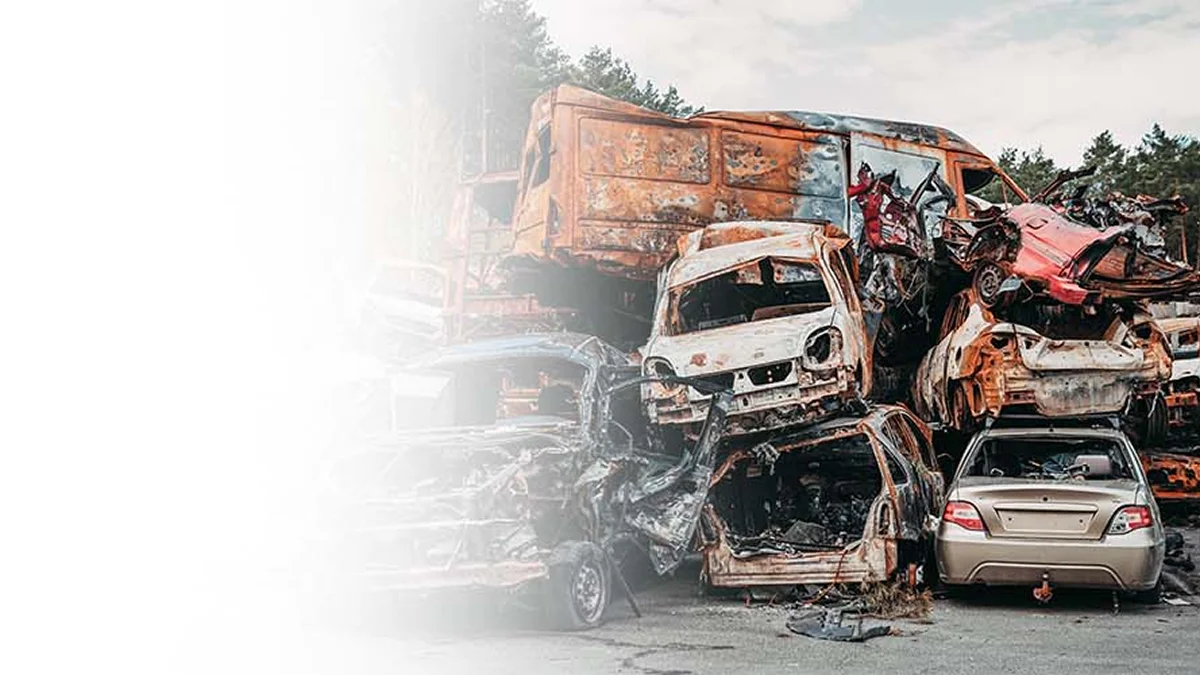Is your car more than 15 years old? Using your car beyond its lifespan can adversely affect the environment and raise safety concerns. Vehicle Scrapping Policy was introduced by the Indian Government to efficiently tackle environmental pollution caused by old and poorly maintained vehicles. Cars after 15 years of age must undergo a fitness test. If the fitness test is cleared, a renewal certificate is issued with a validity of 5 years. But if your car fails the fitness test, it is considered illegal to run on the road. At this stage, you must consider scrapping your car. Read on to learn more about the Vehicle Scrapping Policy in detail and the benefits associated with this process!
Vehicle Scrapping Policy - Rules from 1st April 2023

Multiple elements of rules of car scrapping in India have changed from 1st April 2023. You can learn about them in the below points:
- Automated Testing Stations will conduct automobile fitness tests.
- HCVs or heavy commercial vehicles like trucks and tractors must pass the fitness test to get a road permit.
- Private and commercial cars must also pass the fitness test to get permission to drive on the road.
- Fitness testing for private and commercial cars will start on 1st June 2024.
- Any private or commercial vehicle aged between 15 and 20 years must clear this fitness test.
- Failure to clear the fitness test will convert your car into an ELV or End-of-Life Vehicle.
Benefits of Scrapping Old Cars
There are various benefits of vehicle scrapping in India which include:
1. Reduces Emissions of Toxic Gases
Old vehicles that are not maintained properly can cause severe damage to the environment. You must have often noticed old cars on the roads emitting black gas from its exhaust. Scrapping such poorly maintained vehicles significantly reduces emissions of toxic fumes, leading to a cleaner environment with fewer pollutants.
2. Cheaper Raw Materials for the Steel Industry
Vehicle scrapping in India massively boosts the iron recycling industry. It cuts down on the cost of raw materials, making it easily affordable to industries. This eventually allows manufacturers to reduce the prices of their new products.
3. Creates Job Opportunities
Implementing the Vehicle Scrapping Policy creates new job opportunities for people in the automobile sector. Thus, citizens can reap the benefits of breathing in pollution-free air and arranging money to sustain their families.
4. Boosts the Auto Industry
As per reports, more than 50 lakh unfit cars in India are harming our environment. Scrapping old, unfit cars would increase the demand for new automobiles. This scrap policy for cars in India has proven to be a great government-introduced initiative.
5. Additional Financial Benefits
Scrapping your old vehicle offers various financial bonuses. You can get a 4% to 6% discount on purchasing a new car. You can use the Certificate of Deposit to nullify your registration fee. You can get up to 25% and 15% concessions on road taxes for private and commercial vehicles, respectively.
Also Read - 7 Reasons Why You Should Invest in a Used Car
How to Scrap a Car in India?
Looking for the best way to scrap your unfit vehicle? Follow the below steps for hassle-free vehicle scrapping in India:
Step 1: Connect with the Scrapping Centre
Search for the nearest authorised centre for scrapping. You can reach them via their website or call them. Next, fix your appointment with that centre for efficient scrapping of your car.
Step 2: Arrange the Necessary Documents
You need to submit various documents before scrapping your car. These include:
- PAN Card
- ELV (End-of-Live Certificate)
- Vehicle Registration Number
- Aadhaar Card, Passport or Voter ID as your identity proof
- Undertaking from your side that the information provided is correct
- Your passport-sized photographs
- Cancelled Cheque
Step 3: Commencement of the Scrapping Process
Battery and tyres are removed to begin the scrapping process. Then, refrigerant from your car's air conditioner is drained and moved away. All forms of liquid present in your car are removed such as petrol, engine oil, coolant, etc.
Then, the exhaust system, fuel tank body panels, doors, headlights, seats, floormates, etc. are removed. Lastly, your vehicle is elevated to remove the brakes, suspension and engine before cutting out your Vehicle Identification Number.
Step 4: Recycling the Remaining Part
Once all parts of your car are removed, the recycling process begins. Keep in mind that no harmful AC gas is released into the air or land when recycling the remaining part. All the remains of your car are then dumped by a crane inside a crushing machine. This machine helps in extracting steel bale.
Step 5: Issuance of the Scrapping Certificate
After scrapping your car, you will receive a ‘certificate of destruction’. You must show this certificate to the RTO office for de-registering your vehicle. After successful de-registration, you will receive your vehicle’s scrap value. This amount is usually credited to your bank account directly or given to you via cheque.
Also Read - Loan For Second Hand Cars: Here's How You Can Get it Easily
To Conclude
The car scrapping policy is an excellent initiative taken by the Indian Government to tackle the ever-increasing environmental pollution. Disposing of old, unfit, poorly maintained cars significantly reduces toxic fume emissions, contributing to a pollution-free environment. The certificate provided to you after car scrapping can also benefit you with specific discounts and monetary benefits. You can reach your nearest authorised car scrapping centre and participate in this revolution.
We take utmost care to provide information based on internal data and reliable sources. However, this article and associated web pages provide generic information for reference purposes only. Readers must make an informed decision by reviewing the products offered and the terms and conditions. Loan disbursal is at the sole discretion of Poonawalla Fincorp.
*Terms and Conditions apply